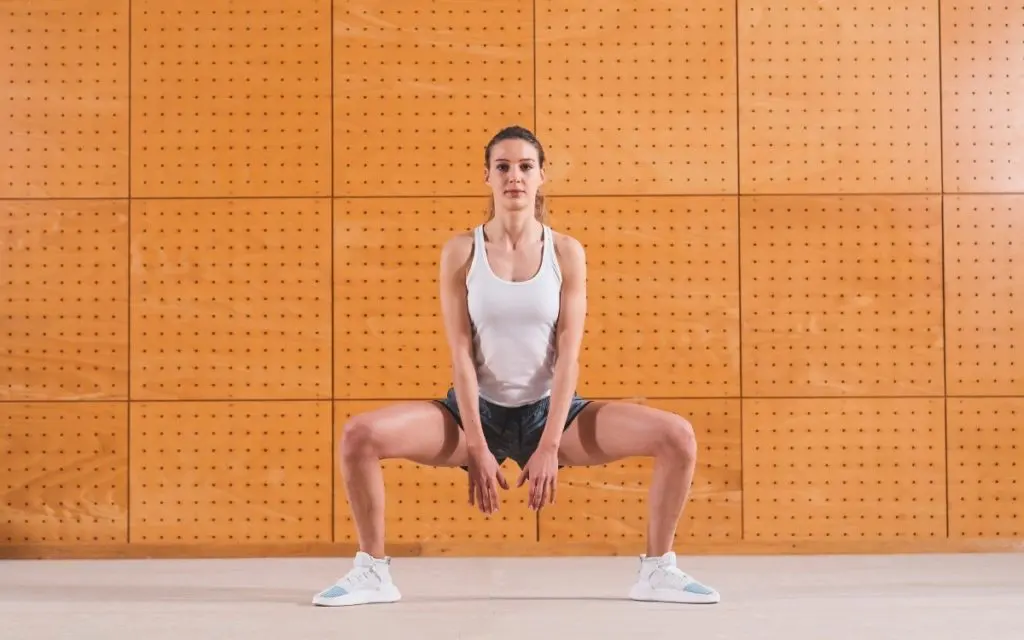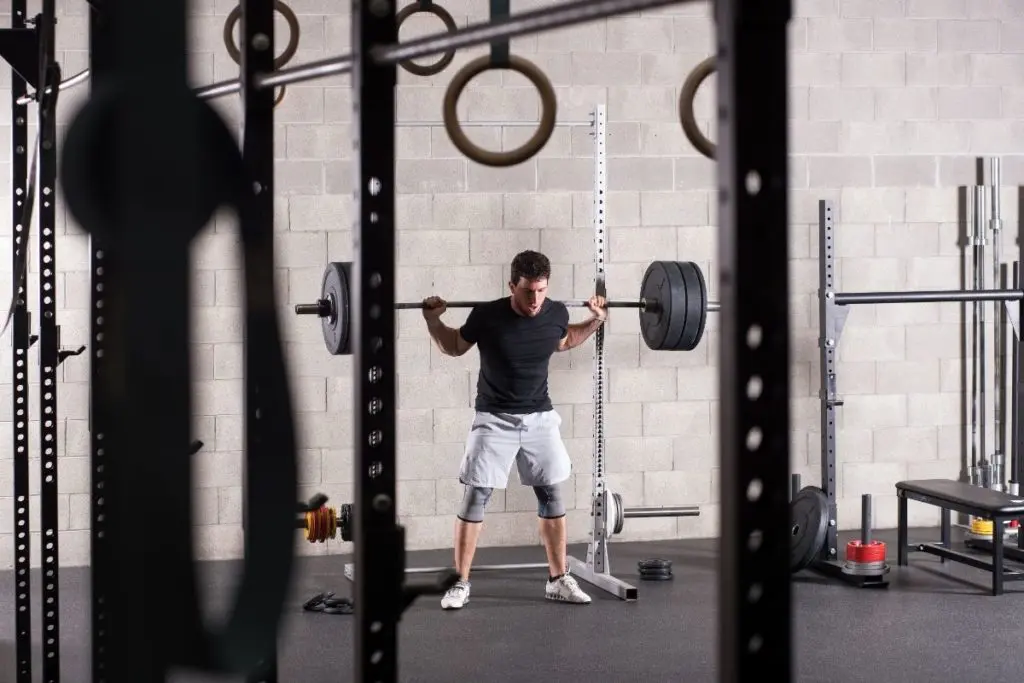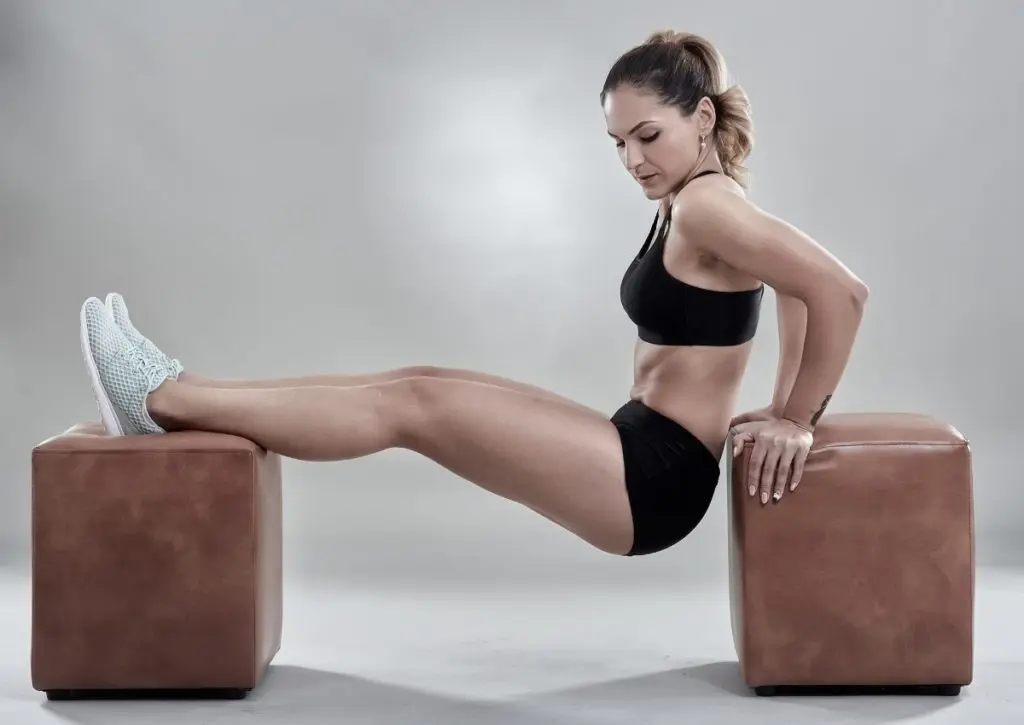What are the benefits of circuit training? Is this the method that could change your perspective on exercise? I was pretty inexperienced when I first started working out. Primarily looking to stave off “dad bod,” I’d tried and failed to exercise at a few different points throughout my life. But since I’m easily bored, doing only one kind of exercise had me checking the time after just a few minutes. I always lost interest.
And anyway, doing all aerobics at the gym or just resistance training, for example, isn’t a very effective workout in the first place. My more experienced gym buddy suggested circuit training — just like you, I had questions — but I tried it, and I was hooked. After a short while, I saw great results, and most importantly, sticking with it was easier than I expected.
In this article, I’ll define circuit training, provide some pros and cons, and even answer some FAQs about this popular approach to structuring a workout. If you’ve always wanted to try circuit training, and you haven’t been sure how to start, or even what that term means, you’ve clicked the right link.
With this simple and easy-to-follow guide, you’ll enjoy the health benefits of circuit training, and just like me, see results well-beyond just tightening up that dad (or mom) bod.
What Is Circuit Training?

There are a few basic kinds of exercise: endurance, resistance, and aerobics or cardio. With circuit training, you do variations of all three in quick succession, plus a full-body exercise. What’s crucial is that there’s little to no rest in-between. What’s best, each exercise works a different part of your body.
Similar to high-intensity interval training but much less intense, this style of workout is an excellent choice for beginners. That’s because it’s versatile enough to start slowly but adaptable enough to stay challenging as your skills and conditioning improve. That all might sound intimidating, but trust me, take it nice ‘n’ easy at first, just like I did, and you’ll get the hang of it in no time.
What Are the Benefits of Circuit Training?
So what exactly is it about circuit training that makes it so effective? Good question. We’ve mentioned a few great health benefits of circuit training already:
Circuit training rotates you through the full range of exercise styles targeting different areas of your body, plus a full-body exercise.
It’s versatile enough to keep you interested but adaptable enough so that you can scale up the intensity over time.
But that’s not all. Here are some other great reasons to try circuit training.
1
Circuit Training Is Great for Weight Loss
What are the benefits of circuit training for weight loss?
The combo of weights and cardio make circuit training a great choice to burn fat and gain muscle. Some caution that circuit training isn’t always the best choice if you’re looking to bulk up, but it is assuredly one of the quickest and most effective ways to slim down.
The benefits of circuit training for weight loss come from the combination of exercises and the pace of the work. This method revs up your metabolism. And as we all know, a high metabolism burns calories.
2
Circuit Training Is a Whole-Body Workout

As previously mentioned, one of the best health benefits of circuit training workout is that it works every part of your body. Best of all, you won’t spend all day doing it. Just circuit train 30 minutes a day, three or four days a week.
Another thing to consider is that if you decide to circuit train on your own at a gym and there’s someone else camped out at your piece of equipment, you can move on to the next station and come back to it. Plus, you’ll have the opportunity to try lots of new and interesting gym equipment.
3
Circuit Training Is Social
Some people require peer pressure to stick to their exercise routine, and circuit training accommodates this nicely. With circuit training, you can either take a class, or find a friend to train with, just like I did. No matter what, having company helps many people stay focused and accountable to their fitness goals.
4
Reduces the Risk of Injuries
Ok, there’s injury risk with any form of exercise, including exercises common in circuit training. So be sure to get your form right, take it slow, and don’t overdo it.
But there is such a thing as overuse or repetitive cause injuries. And the nature of circuit training — a variety of exercises done for relatively short periods — helps reduce the risk of these kinds of injuries.
On top of that, the scalable nature of circuit training helps those recovering from injury get themselves back into shape. That’s while serious athletes also use circuit training to workout without adding additional strain on the joints and muscles used in their primary sport.
5
Circuit Training Can Prevent Disease
All aerobics and cardio get your blood flowing and your circulation pumping. While this improves cardiovascular health by itself, the fact that circuit training works different muscle groups boosts your whole body’s cardiovascular health.
That’s opposed to other forms of cardio that rush blood to just one part of your body, like jogging and your legs, for example. Whole-body cardiovascular health is particularly helpful for those who live with diabetes. Furthermore, the quickened pace of circuit training helps improve cardiopulmonary health, helping those who experience asthma.
6
Requires No Extra Equipment
On top of everything else, circuit training requires very little equipment. Of course, it can if you go to the gym, if you take a class, or if you have a nice home gym set up of your own. But if you’re looking for a great way to get toned and fit without a bunch of equipment or an option that lets you workout both indoors and outside, circuit training is a great choice.
If you’re just getting started with circuit training, start with your own bodyweight. When you’re ready for a challenge, try one-gallon milk jugs, for example. If you’re ready to add gear, start with the following:
- Kettlebells
- Barbells
- A weight bench
With that list alone, you’re well on your way to a great circuit training workout.
While circuit training is a great fitness routine, there are some drawbacks, too. Before you get started, here are some things you should be aware of:
The Drawbacks and Disadvantages of Circuit Training

No form of exercise or workout routine is perfect for everyone. In conclusion, let’s cover a few reasons why circuit training might NOT be the best choice for you.
1
Circuit Training Doesn’t Mean You’ll Get Swole
If bulking up is your main objective, circuit training isn’t the choice for you. Because you’re doing a quick number of exercises, most circuit training resistance exercises use lighter weights. It takes lifting heavy weights repeatedly, with up to two minutes of rest between sets to bulk up properly.
2
Suitable for Conditioning but Not the Best for Endurance
Again, the short ‘n’ quick nature of circuit training will get you in good shape, but it might not do much to build endurance. So in this regard, circuit training is not recommended for long-distance runners or those training for a marathon.
3
Circuit Training Takes Some Space
When it comes to equipment, circuit training needs a little or a lot, depending on your style. Space to circuit train, on the other hand, can become an issue. For example, at a gym, you may end up feeling frustrated when your flow is interrupted by another gym member on the equipment you need.
And if you circuit train at home, you’ll need room to roam — either for weights or to perform the series of exercises while moving freely. Also, if you’re on the second floor of an apartment building, you’ll want to be mindful of your neighbors since you’ll be jumping around and moving a lot.
That’s why many people circuit train outside, but that’s simply not possible during colder months in many parts of the country.
4
Beginners Should Beware
Hold on just a sec: earlier, you said circuit training is great for beginners — and it is! The ability to start slow and ramp up makes it a great choice for those just getting into shape!
But what beginners should be aware of when it comes to circuit training is fatigue, and primarily how fatigue affects form. Even using light weights, form goes a long way to prevent injuries.
If you’re new to working out, circuit training might tire you out quickly, causing your form to slip. Or you might be new to a particular exercise and need a little extra time getting the form right.
Regardless of the reason, improper form can cause injury. But also, proper form improves results.
Circuit Training Workout Guide

To get started with circuit training, you can take a class. These days, they’re pretty common at many local gyms. In a class, stations, different areas to perform each exercise, will be set up for you already. Or instead, develop a circuit training regimen on your own.
If you choose that route, here’s a good circuit training workout for beginners:
- 20 reps of bodyweight squats
- 10 push-ups
- 10 walking lunges, each leg
- Dumbbell rows (No weights at home? Use one-gallon milk jugs instead)
- Plank for 15 seconds
- 30 reps, jumping jacks
If that sequence doesn’t impress, feel free to construct one of your own.
Don’t like push-ups? Try pull-ups instead, or even shoulder press. Hate squats? No problem — step-ups are an excellent alternative.
As for cardio, jump rope is another excellent option for the aerobic portion of circuit training.
No matter what kind of circuit training exercise you try, do the series of exercises over and over again for at least 30 minutes. At first, you might give yourself 90 seconds between each rep. But trust me, over time, your rest periods will get shorter and shorter.
What’s certain is that you’ll be having so much fun you’ll want to get up and at it daily. But don’t overdo it. Experts warn against circuit training every day. That’s because you need time to recover between sessions. Instead, try to circuit train 30 minutes three or four times a week, and you’ll be in good shape — literally.
Complete the Circuit: A Final Word on the Health Benefits Circuit Training
By now, it’s clear that circuit training is an ideal choice if you’re anything like me: interested in exercising but easily bored. Moving through a series of quick successions of exercises covering endurance, resistance, and aerobics or cardio, plus a full-body exercise, not only keeps the workout fresh, it offers many health benefits.
While you might not bulk up like you can in other kinds of training, many choose the benefits of circuit training for weight loss. It’s also a great choice for beginners or anyone recovering from an injury and just getting back out there. You can circuit train at home, at the gym, or in class. Best of all, you can ramp up the intensity as your conditioning improves.
No workout is right for everyone, but if you follow the do’s and don’ts of circuit training outlined in this article, start slow, be careful, and most of all — have fun. Circuit training certainly might be the workout solution you’ve been searching for.
Further Reading






